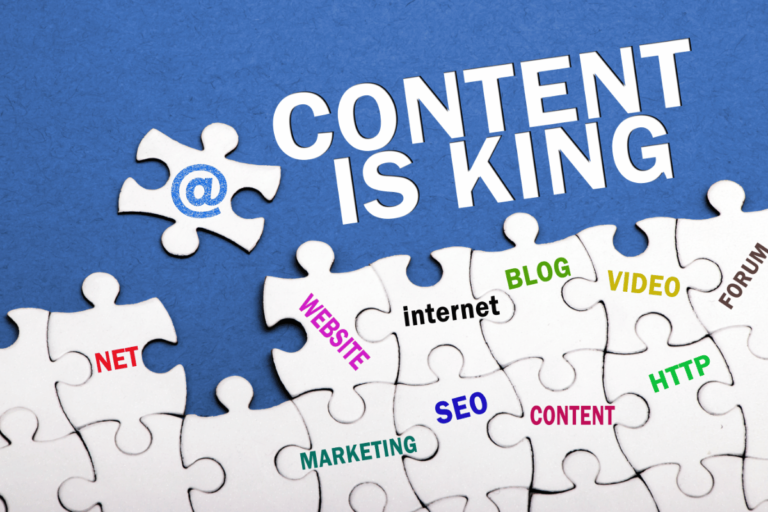Email Marketing Skills
Are your email marketing skills falling flat? Don’t worry, you’re not alone. With the ever-increasing competition for attention in the inbox, it’s crucial to level up your game.
Imagine your emails as personalized invitations to a party. Just like a well-decorated venue and engaging conversation make for a memorable event, mastering email design and crafting compelling subject lines are key to grabbing attention.
In this article, we’ll delve into the essential email marketing skills you need to make your campaigns shine.
Key Takeaways
- The layout and design of emails play a crucial role in attracting attention and guiding recipients towards important information and call-to-action.
- Personalization is a powerful strategy for creating attention-grabbing subject lines and improving click-through rates.
- Segmenting the audience based on demographics and interests, and incorporating dynamic and user-generated content, can enhance the personalization of email content.
- Analyzing email data and metrics like open rates, click-through rates, and unsubscribe rates helps optimize email campaigns and make data-driven decisions.
Mastering Email Design
Mastering email design is essential for creating engaging and visually appealing marketing campaigns. When it comes to email marketing, the layout and template of your emails play a crucial role in capturing the attention of your audience and driving them to take action.
The email layout refers to the arrangement and organization of the different components within an email. A well-designed layout ensures that your message is clear and easy to read. It helps to guide the recipient’s eye towards the most important information and call-to-action. By using a clean and uncluttered layout, you can create a seamless user experience that encourages engagement and conversions.
Equally important is the email template you choose. A well-designed template sets the tone for your brand and creates a consistent look and feel across all your email communications. It allows you to showcase your brand’s personality and establish a strong visual identity. Additionally, using a template saves time and effort by providing a structure that can be easily customized for different campaigns.
To master email design, it’s important to consider both the layout and template of your emails. By creating visually appealing and user-friendly designs, you can increase the effectiveness of your email marketing campaigns and drive better results.
Writing Compelling Subject Lines
When crafting your email marketing campaigns, it’s important to pay attention to the subject lines as they serve as the first point of contact with your audience. Writing catchy subject lines can greatly impact the success of your email campaigns by improving email click-through rates. To help you create compelling subject lines that grab attention and entice your audience, here are some strategies to consider:
| Strategies | Examples |
|---|---|
| Personalization | "John, we have a special offer just for you!" |
| Urgency | "Last chance to save 50% off – Sale ends tonight!" |
| Curiosity | "You won’t believe what we have in store for you…" |
| Benefit-focused | "Discover the secret to glowing skin in just 7 days" |
| Social Proof | "Join over 10,000 satisfied customers who love our product!" |
Crafting Personalized Email Content
To create personalized email content that resonates with your audience, you should tailor your messages to their specific needs and interests. By implementing effective personalization strategies and content personalization techniques, you can increase engagement and drive conversions.
Here are five techniques to help you craft personalized email content that captures your audience’s attention:
-
Segment your audience: Divide your email list into different segments based on demographics, interests, or past purchase behavior. This allows you to send targeted messages that are relevant to each group.
-
Use dynamic content: Customize your emails by dynamically inserting content based on each recipient’s preferences or actions. This could include product recommendations, personalized offers, or location-specific information.
-
Personalize subject lines: Grab your audience’s attention with personalized subject lines that address them by name or include specific details that are relevant to them.
-
Include user-generated content: Incorporate testimonials, reviews, or social media posts from satisfied customers to add a personal touch and build trust.
-
Send triggered emails: Set up automated emails triggered by specific actions or events, such as abandoned cart reminders or personalized birthday greetings.
Understanding Email Analytics
By analyzing your email data, you can gain valuable insights into your audience’s behavior and preferences. Understanding email analytics is crucial for optimizing your email campaigns and increasing your email conversion rates.
Email conversion rates refer to the percentage of recipients who take the desired action after receiving your email, such as making a purchase or subscribing to a newsletter. By tracking these rates, you can identify which emails are resonating with your audience and which ones are not.
Email campaign optimization involves using data from email analytics to improve the effectiveness of your campaigns. This includes analyzing metrics such as open rates, click-through rates, and unsubscribe rates. By monitoring these metrics, you can identify patterns and trends in your audience’s engagement with your emails.
To improve your email conversion rates and optimize your campaigns, you can make data-driven decisions based on your email analytics. For example, if you notice that certain subject lines consistently result in higher open rates, you can use that information to craft more compelling subject lines in future emails. Additionally, if you find that certain types of content or offers are driving higher click-through rates, you can focus on creating more of that content to engage your audience.
Building Effective Email Lists
Are you struggling to reach the right audience with your email marketing campaigns?
Building an effective email list is crucial for targeting the right audience and increasing subscriber engagement.
Targeting the Right Audience
You must identify the relevant audience to create successful email lists. Targeted email campaigns are crucial for maximizing the effectiveness of your email marketing efforts. To achieve this, audience segmentation plays a key role.
Here are five reasons why building an effective email list is essential:
-
Higher engagement: By targeting the right audience, you can tailor your messages to their specific interests, increasing engagement and response rates.
-
Improved conversion rates: When you send personalized and relevant content to your audience, you’re more likely to convert them into customers or take the desired action.
-
Reduced unsubscribe rates: By sending emails to the right people, you reduce the chances of recipients unsubscribing from your list.
-
Higher ROI: Targeted email campaigns generate higher returns on investment as you’re reaching out to individuals who are more likely to be interested in your products or services.
-
Enhanced brand reputation: Sending relevant content to your target audience helps establish your brand as knowledgeable and customer-focused, enhancing your reputation.
Increasing Subscriber Engagement
To maximize subscriber engagement and build effective email lists, it is important to use compelling content and enticing offers. By providing valuable and relevant information to your subscribers, you can keep them engaged and interested in your emails. Additionally, offering exclusive promotions, discounts, or freebies can incentivize subscribers to open your emails and take action.
Subscriber retention is crucial for the success of your email marketing campaign. To keep your subscribers engaged and prevent them from unsubscribing, you need to strike a balance in your email frequency. Sending too many emails can overwhelm your subscribers and lead to higher unsubscribe rates. On the other hand, sending too few emails may cause your subscribers to forget about your brand. Regularly monitoring and analyzing your email metrics can help you determine the optimal email frequency for your audience.
| Subscriber Retention | Email Frequency |
|---|---|
| Provide valuable and relevant content | Strike a balance between too many and too few emails |
| Offer exclusive promotions and discounts | Regularly monitor and analyze email metrics |
| Personalize your emails | Test different email frequencies to find the optimal one |
Implementing A/B Testing Strategies
Try out different subject lines to improve open rates. A/B testing is a powerful strategy that allows you to compare two versions of an email and determine which one performs better. By implementing A/B testing best practices, you can optimize your email marketing campaigns and achieve higher engagement rates.
Here are five reasons why you should start using A/B testing in your email marketing strategy:
-
Gain insights into customer preferences: A/B testing allows you to test different elements of your emails, such as subject lines, content, and call-to-action buttons. By analyzing the results, you can understand what resonates with your audience and tailor your emails accordingly.
-
Increase open and click-through rates: Through A/B testing, you can identify the subject lines and email designs that generate the highest open and click-through rates. This will help you create more compelling and engaging emails that capture your subscribers’ attention.
-
Optimize conversion rates: By testing different offers, layouts, and designs, you can identify the elements that drive the highest conversion rates. This will enable you to create more effective email campaigns that encourage your subscribers to take action.
-
Improve overall campaign performance: A/B testing allows you to continuously refine and improve your email marketing strategy. By testing and optimizing various elements, you can enhance the overall performance of your campaigns and achieve better results.
-
Learn from case studies: There are numerous A/B testing case studies available that can provide valuable insights and inspiration for your own tests. By studying successful case studies, you can learn from others’ experiences and apply their strategies to your own email marketing campaigns.
Incorporating A/B testing into your email marketing strategy is essential for driving better engagement and achieving higher conversion rates. By following best practices and learning from case studies, you can continuously optimize your campaigns and deliver more impactful emails to your subscribers.
Optimizing Email Deliverability
Are your emails being marked as spam? Don’t worry, there are ways to optimize your email deliverability and increase your open rates.
By following spam filter best practices, such as avoiding spam trigger words and using a reputable email service provider, you can ensure that your emails land in the inbox instead of the spam folder.
With higher open rates, you’ll have a better chance of engaging with your customers and achieving your email marketing goals.
Spam Filter Best Practices
Improve your email deliverability by implementing effective spam filter strategies. Spam filters are designed to protect recipients from unwanted and potentially harmful emails. To ensure your emails reach the inbox, follow these best practices:
-
Understand spam filter algorithms: Familiarize yourself with how spam filters work and the factors they consider when filtering emails.
-
Avoid spam triggers: Be cautious of using words or phrases that are commonly associated with spam, such as ‘free’, ‘discount’, or ‘urgent’.
-
Optimize your subject line: Craft compelling subject lines that are relevant and engaging, while avoiding spammy tactics like excessive capitalization or misleading claims.
-
Personalize your emails: Use segmentation and personalization techniques to deliver tailored content that resonates with your recipients, making your emails less likely to be flagged as spam.
-
Monitor and test: Regularly monitor your email deliverability and conduct tests to identify any potential issues and optimize your strategies accordingly.
Increasing Open Rates
To boost your email open rates and ensure your messages are delivered successfully, focus on engaging your audience and optimizing your email deliverability strategies.
Improving subject lines is a crucial step in capturing your recipient’s attention and increasing the chances of them opening your emails. Craft subject lines that are concise, compelling, and personalized to pique their curiosity. Use action words, create a sense of urgency, or offer exclusive benefits to entice them to open your emails.
Additionally, enhancing email design plays a vital role in attracting your audience and encouraging them to engage with your content. Use visually appealing templates, incorporate eye-catching graphics, and ensure your emails are mobile-friendly for a seamless user experience.
Automating Email Campaigns
You can streamline your email campaigns by using automated tools. With the help of these tools, you can save time and effort while still delivering personalized and timely emails to your subscribers.
Here are five key benefits of automating your email campaigns:
-
Automating email personalization: By using automation tools, you can easily personalize your emails based on your subscribers’ preferences, demographics, and behavior. This helps you create a more engaging and relevant experience for your audience.
-
Optimizing email timing: Automated tools allow you to schedule your emails to be sent at the most optimal time. This ensures that your messages reach your subscribers when they’re most likely to open and engage with them.
-
Increase efficiency: Automation eliminates the need for manual tasks, such as sending individual emails or segmenting your audience. This allows you to focus on other important aspects of your email marketing strategy.
-
Improve consistency: With automation, you can ensure that your emails are sent consistently and on a regular basis. This helps you maintain a strong presence in your subscribers’ inboxes and keeps your brand top of mind.
-
Drive better results: By automating your email campaigns, you can deliver more targeted and relevant content to your subscribers. This increases the chances of conversions, engagement, and customer loyalty.
Incorporating automated tools into your email marketing strategy can significantly enhance your campaign’s effectiveness. By automating email personalization and optimizing email timing, you can save time, increase efficiency, and achieve better results.
Utilizing Segmentation Techniques
Are you looking to maximize the effectiveness of your email marketing campaigns?
Utilizing segmentation techniques can be the key to reaching the right audience at the right time. By strategically selecting your target audience and personalizing your email content, you can increase engagement and drive conversions.
Don’t waste time sending generic emails to your entire list – take advantage of segmentation to deliver tailored messages that resonate with your customers.
Targeted Audience Selection
Using effective segmentation techniques can help you reach a more specific and engaged audience for your email marketing campaigns. By segmenting your audience, you can tailor your messages to their specific needs and interests, increasing the likelihood of engagement and conversion.
Here are five key benefits of audience segmentation for email targeting:
-
Improved personalization: Segmenting your audience allows you to send personalized and relevant content that resonates with each individual.
-
Higher open and click-through rates: When you send targeted messages, your audience is more likely to open and engage with your emails, resulting in higher open and click-through rates.
-
Increased conversions: By delivering highly relevant content, you can guide your audience towards taking the desired action, leading to increased conversions and sales.
-
Reduced unsubscribe rates: By sending emails that are tailored to their interests, you can decrease the number of subscribers who opt out of your email list.
-
Better customer loyalty: When you provide value to your audience by sending them relevant content, they’re more likely to stay engaged with your brand and become loyal customers.
Personalized Email Content
One effective way to enhance your email marketing campaigns is by utilizing segmentation techniques to create personalized content for your audience. By tailoring your emails to specific segments of your subscriber list, you can deliver content that is relevant and valuable to each individual recipient. This level of personalization can significantly improve engagement and conversion rates. To implement this strategy effectively, you can use personalized email templates and employ various personalization strategies. Here is an example of how you can segment your audience and create personalized content:
| Segment | Demographics | Interests |
|---|---|---|
| Segment A | Age: 25-35 | Interests: Fitness, Healthy Lifestyle |
| Segment B | Age: 18-24 | Interests: Fashion, Technology |
| Segment C | Age: 35+ | Interests: Home Decor, Travel |
Integrating Email With Other Marketing Channels
To effectively integrate email with other marketing channels, you need to understand the importance of consistency and cohesion in your messaging. By integrating social media and email automation, you can create a powerful marketing strategy that reaches your audience through multiple channels.
Here are five key benefits of integrating email with other marketing channels:
-
Increased brand visibility: By combining email with social media, you can reach a wider audience and increase your brand’s visibility. Sharing email content on social media platforms allows you to reach potential customers who may not be subscribed to your email list.
-
Improved customer engagement: Integrating email with other marketing channels enables you to engage with your customers on multiple platforms. You can use social media to encourage email sign-ups and then use email automation to send personalized content that keeps them engaged.
-
Enhanced targeting: By integrating email with other marketing channels, you can gather valuable data about your audience’s preferences and behaviors. This data can then be used to target your email campaigns more effectively, resulting in higher open and click-through rates.
-
Consistent messaging: Integrating email with other marketing channels ensures that your messaging is consistent across all platforms. This consistency helps to reinforce your brand identity and build trust with your audience.
-
Increased conversion rates: By integrating email with other marketing channels, you can guide your audience through the sales funnel more effectively. By providing consistent messaging and targeted content, you can increase conversion rates and drive more sales.
Conclusion
Congratulations! You’ve now mastered the art of email marketing. With your newfound skills in design, subject lines, personalized content, analytics, list building, deliverability, automation, segmentation, and integration, you’re well-equipped to take your marketing campaigns to new heights.
Remember, the sky’s the limit! So go forth and spread your wings, taking your audience on an emotional rollercoaster that leaves them craving more. Your efforts will surely pay off, turning leads into loyal customers.
Happy emailing!






